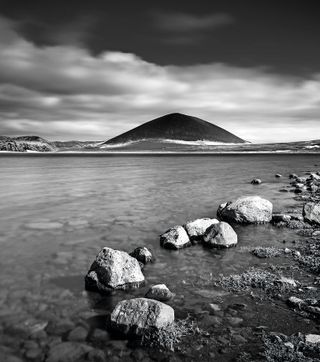The 10 laws of landscape photography
Discover how to capture your best ever landscape photos
Law 7: Don't rely on the rule of thirds
Steer clear of rigid guidelines and learn how the landscape and your creative choices can complement each other

The classic rules of image composition are staples of all photography genres. The rule of thirds (which suggests dividing your frame into a 3 x 3 grid, then placing your focal point where grid lines meet) is perhaps the one most commonly applied to landscape photography. But in the real world, guidelines like this are more like handy suggestions than hard and fast rules – and if you rigidly stick to one composition, your shots can end up looking similar and slightly boring.
The other big problem with rules is that nature doesn’t always follow them. The landscape in front of you may not want to fit into a nice, regular rule-of-thirds composition. The key is to allow the subject to influence the composition, rather than trying to force the subject to conform to the rule.

Law 8: Don't include too much in the shot
Remember that less is more, and you’ll draw attention towards what matters most in your shot

Creating a strong, striking landscape composition is often as much about what you leave out of the frame as what you include. When you’re faced with a stunning landscape, it’s often difficult to decide what to exclude, so use a simple procedure to help out.
First, decide which part of the scene is essential to the composition. This is often the feature or subject that first made you stop and consider taking a shot, such as a mountain peak, a tree or even the colours in the foreground.
“Creating a striking composition is often as much about what you leave out of the frame as what you include”
Using this main subject, start to include other elements, usually one at a time, to see if they will fit into the composition without detracting from the main subject. With practice, you can do this without taking any photos, but one of the benefits of digital cameras is that you can try out different compositions, then scroll through the images on your camera’s rear display to decidewhich ones work.
Get daily insight, inspiration and deals in your inbox
Get the hottest deals available in your inbox plus news, reviews, opinion, analysis and more from the TechRadar team.
Keep checking that all of the elements of the scene work together, and that the main element you identified at the start is still what your eye is drawn to.

